223
What dishes are preferred by famous historical figures
“History is a lantern into the future that shines to us from the past...” wrote Russian historian Vasily Osipovich Klyuchevsky. To understand the era in which our fathers and grandfathers lived, and to highlight the details of past years, we are helped by the fate of outstanding compatriots who rose to the top of power.
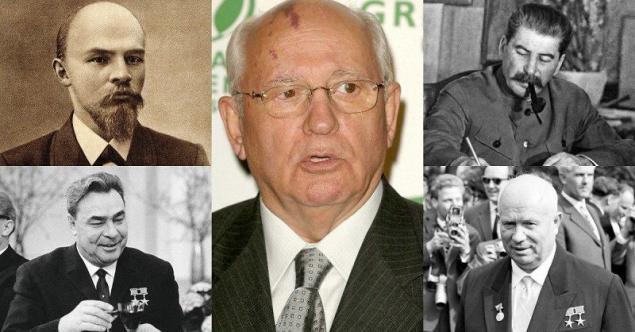
But for the meager biographical data of a person, as a rule, do not see: was born, studied, appointed, died. We can learn more about the character, habits, inner world and even secret addictions of a person by studying his food preferences.

"Site" represent recipes From Lenin to Gorbachev, so that our readers can cook the food of the general secretaries and presidents in their kitchens.
Volody’s mother, Maria Alexandrovna, was born and raised in the Protestant environment of the Volga Germans, so the food in the Ulyanov family was usually very simple. Among the hot dishes, scrambled eggs dominated. For breakfast served coffee and millet porridge, for lunch - milk, vegetable, cereal soups.

The crown dish was the German armeritter, or "Poor Knight": eggs were whipped with milk, added a little sugar, dipped slices of the loaf into egg-milk mixture and roasted them in butter to ruddy crust.
While still a student, Vladimir Ilyich acquired gastritis, which in 1895 went to treat in Sweden. It is hard to believe, but the most beneficial way on the health of Lenin affected ... Siberian exile. Fresh, abundant and regular village food helped where European doctors were powerless.
“I live well, I am quite satisfied with the table. I forgot and thought about mineral gastric water, and I hope I will soon forget its name! “I am not yet used to the present healthy appearance of Volody, in St. Petersburg I am used to seeing him always in a rather laudatory state,” Krupskaya wrote in a letter dated June 26, 1898.

In the future, leading nomadic underground life Lenin could not pay much attention to food. He often ate irregularly and dryly, and therefore in the last years of his life was forced to adhere to a strict diet.
Milk soup with dumplings
The ingredients
Preparation
Stalin highly valued his native Caucasian cuisine, but, contrary to popular belief, did not limit himself to it at all. “Father of Nations” was a lover of lamb barbecue and even sometimes cooked it himself, did not refuse to eat baked potatoes, adored diurnal shivers, for which salted cabbage and cucumbers were first stewed for a long time to get rid of excess acid.
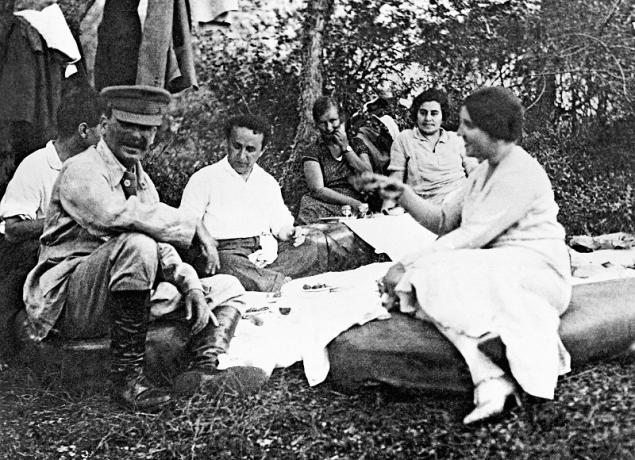
Since the time of exile in the Turukhansk region, Stalin has retained a predilection for nelma stroganin, and thanks to his love of bananas, this exotic fruit began to appear in large cities of the Soviet Union after the war.

Culinary experiments of Joseph Vissarionovich sometimes surprised even the closest associates, so, a member of the Politburo of the Central Committee of the CPSU Anastas Mikoyan recalls: “...He loved to invent and order dishes unknown to us. For example, he began to order cooks and gradually improve one dish: not the soup, not the second.
In a large boiler mixed eggplant, tomatoes, potatoes, black pepper, bay leaf, pieces of low-fat lamb meat - and everything was brought to readiness. This dish was served hot on the table. When they opened the pot, it was a pleasant smell. There was added cilantro and other herbs. The dish was delicious. Stalin gave it the name Aragvi.
Aragvi
The ingredients
Preparation
Nikita Khrushchev became First Secretary of the CPSU Central Committee in 1953. With his arrival. Kremlin kitchen It got closer to the people. In the menu appeared blood sausage, dumplings with cabbage, cottage cheese and potatoes, cakes, zestigai, porridge and favorite First Secretary hunting kulash.

Khrushchev often praised the kulush in front of guests: “Eat one of him – and already fed.” This is the first and the second together.” Nikita Sergeevich also watched the content of the festive Kremlin treat. On the tables with him began to serve a salad "Tsar" of squid, crabs and red caviar.
Nikita Khrushchev's Favorite Kulesh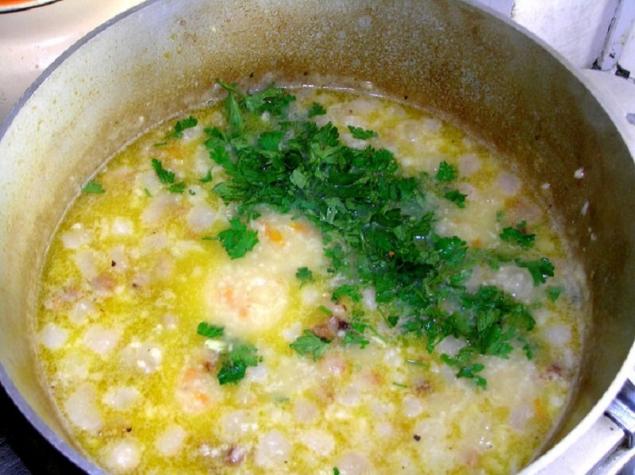
The ingredients
Preparation
Brezhnev Leonid Ilyich Brezhnev, who served as General Secretary of the Central Committee of the CPSU from 1966 to 1982, loved simple eggs with lard, cooked in a cast-iron pan. Like Stalin, he appreciated good barbecue and game. Sometimes I ordered chebureks. But the state of health did not contribute to such high-calorie dinners, so he rarely allowed them to himself.
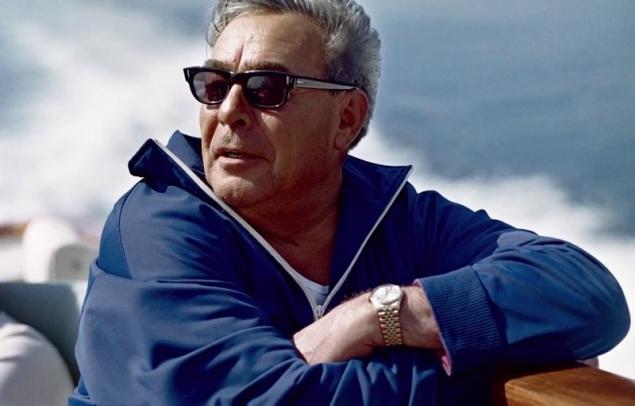
Respect the Secretary General of Ukrainian borscht, which was prepared by his wife Victoria Petrovna. The second preferred patties, roast, dumplings with potatoes, sauerkraut and fried onions, cakes. I loved fried catfish and boneless.
In his youth, when he was a slender handsome man, Brezhnev strictly monitored his weight, and with age the struggle with extra pounds acquired the character of mania. According to the stories of Kremlin chefs, he watched every spoon, refused bread, ate only cabbage and tea for dinner.
Dietary pilaf with vegetables
The ingredients
Preparation
Gorbachev began Perestroika in the Kremlin kitchen by sending cooks for internships at Buckingham Palace, from where they brought new recipes and rules of serving.
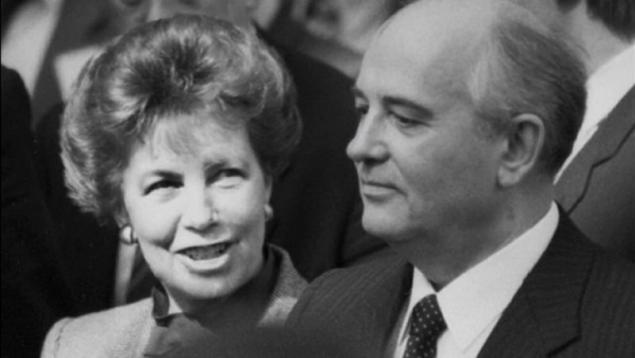
Not the last role in the changes was played by Raisa Maximovna. She loved when the tables were not broken by snacks, as was the case with Khrushchev or Brezhnev, but decorated with flowers and vases of fruit. It was then that a special role was given to exquisite desserts, mousse, ice cream and miniature cakes for one bite.
Gorbachev’s personal chef says that Mikhail Sergeyevich loved cereals: “We gave him not cast iron, but small bowls with different porridges.” Buckwheat, pearl, barley ... He especially liked the barley of real grain. It had to be cooked for eight hours, but it was worth it.”
Guryev porridge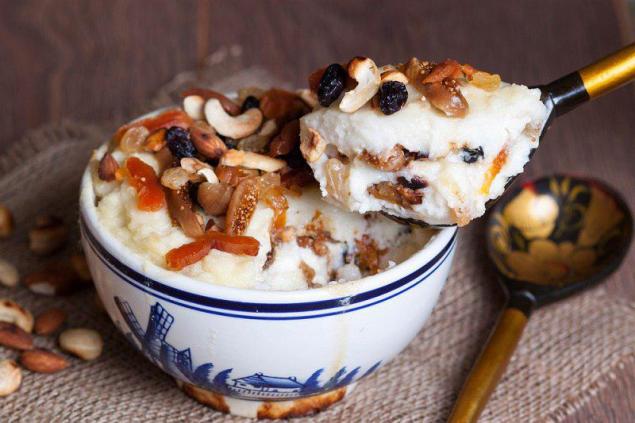
The ingredients
Preparation
In the USSR, these diets were copied under a blueprint, passed from hand to hand and even memorized. Editorial "Site" He shares with you the five most popular diets of the time. And they really do work!
The composition of the drink for the Kremlin centenarians is brilliantly simple, but this simplicity carries a shock charge of nutrients. Today we will tell you how to make the same vitamin drink from rosehip, which is called “Kremlin cognac”.
Many people who grew up in the USSR, miss the "delicious" of that period, even now, when the shops are utterly abundant. A taste from childhood - it can not be felt, but you can remember 23 Soviet delicacies that we once adored.

But for the meager biographical data of a person, as a rule, do not see: was born, studied, appointed, died. We can learn more about the character, habits, inner world and even secret addictions of a person by studying his food preferences.

"Site" represent recipes From Lenin to Gorbachev, so that our readers can cook the food of the general secretaries and presidents in their kitchens.
Volody’s mother, Maria Alexandrovna, was born and raised in the Protestant environment of the Volga Germans, so the food in the Ulyanov family was usually very simple. Among the hot dishes, scrambled eggs dominated. For breakfast served coffee and millet porridge, for lunch - milk, vegetable, cereal soups.

The crown dish was the German armeritter, or "Poor Knight": eggs were whipped with milk, added a little sugar, dipped slices of the loaf into egg-milk mixture and roasted them in butter to ruddy crust.
While still a student, Vladimir Ilyich acquired gastritis, which in 1895 went to treat in Sweden. It is hard to believe, but the most beneficial way on the health of Lenin affected ... Siberian exile. Fresh, abundant and regular village food helped where European doctors were powerless.
“I live well, I am quite satisfied with the table. I forgot and thought about mineral gastric water, and I hope I will soon forget its name! “I am not yet used to the present healthy appearance of Volody, in St. Petersburg I am used to seeing him always in a rather laudatory state,” Krupskaya wrote in a letter dated June 26, 1898.

In the future, leading nomadic underground life Lenin could not pay much attention to food. He often ate irregularly and dryly, and therefore in the last years of his life was forced to adhere to a strict diet.
Milk soup with dumplings

The ingredients
- 0.5 liters of milk
- 1 egg
- 2 tbsp sugar
- 6-7 tbsp flour
- butter
- pinch
Preparation
- Hit an egg with a fork and a pinch of salt.
- Sprinkle portions of sifted flour and mix soft dough.
- Bring the milk to a boil, pour the sugar.
- Take small pieces from the dough, thus forming dumplings. Send them to boiling milk.
- Bring the milk with dumplings to a boil and, stirring, boil over a small heat for 5 minutes.
- Before serving on the table, add a tablespoon of butter to the soup pan.
- Bon appetit!
Stalin highly valued his native Caucasian cuisine, but, contrary to popular belief, did not limit himself to it at all. “Father of Nations” was a lover of lamb barbecue and even sometimes cooked it himself, did not refuse to eat baked potatoes, adored diurnal shivers, for which salted cabbage and cucumbers were first stewed for a long time to get rid of excess acid.

Since the time of exile in the Turukhansk region, Stalin has retained a predilection for nelma stroganin, and thanks to his love of bananas, this exotic fruit began to appear in large cities of the Soviet Union after the war.

Culinary experiments of Joseph Vissarionovich sometimes surprised even the closest associates, so, a member of the Politburo of the Central Committee of the CPSU Anastas Mikoyan recalls: “...He loved to invent and order dishes unknown to us. For example, he began to order cooks and gradually improve one dish: not the soup, not the second.
In a large boiler mixed eggplant, tomatoes, potatoes, black pepper, bay leaf, pieces of low-fat lamb meat - and everything was brought to readiness. This dish was served hot on the table. When they opened the pot, it was a pleasant smell. There was added cilantro and other herbs. The dish was delicious. Stalin gave it the name Aragvi.
Aragvi

The ingredients
- 700g mutton
- 100g curly fat
- 400g eggplant
- 300g sweet pepper
- 500g large tomatoes
- 250g small tomatoes
- 400g onion
- 500g potatoes
- 10g garlic
- 1 bitter pepper
- 150 ml of vegetable oil
- 20g cilantro
- 20g parsley
- 20g green onion
- salt and pepper
Preparation
- Cut the products: meat - in medium pieces, onions - in small cubes, curly fat - in small pieces. Cut small tomatoes into 6 parts, cut potatoes and eggplant in small pieces, finely insert greens.
- Warm up the pan, put curly fat on it and melt it for 7-8 minutes on a small fire. Remove the remaining squarks from the pan.
- In the resulting fat, put the meat and roast for 5 minutes on a medium heat, then add onion and roast for another 10 minutes. Put the onions and meat out of the pan.
- Sliced eggplant put in a frying pan with fat in which the meat was stewed, add a teaspoon of salt and roast 5-7 minutes until the golden crust.
- To prepare the sauce grind large tomatoes, garlic, 100 g of sweet and one hot pepper.
- Now it's time to put all the ingredients in pots. Please note that meat and vegetables in the pot should be equal. Start with 2 tablespoons of sauce, then put 2 teaspoons of cilantro, parsley and green onions, potatoes, meat with onions, small tomatoes, salt and pepper, sweet pepper and eggplant, and on top - another 2 spoonfuls of sauce.
- So, put the pots in the cold oven, turn it on 180 degrees and bake 80-100 minutes.
- Bon appetit!
Nikita Khrushchev became First Secretary of the CPSU Central Committee in 1953. With his arrival. Kremlin kitchen It got closer to the people. In the menu appeared blood sausage, dumplings with cabbage, cottage cheese and potatoes, cakes, zestigai, porridge and favorite First Secretary hunting kulash.

Khrushchev often praised the kulush in front of guests: “Eat one of him – and already fed.” This is the first and the second together.” Nikita Sergeevich also watched the content of the festive Kremlin treat. On the tables with him began to serve a salad "Tsar" of squid, crabs and red caviar.
Nikita Khrushchev's Favorite Kulesh

The ingredients
- 1kg chicken meat
- 200g lard
- 2-3 bulbs
- 2 l of water
- 1 tbsp rice
- 10 fresh tomatoes
- 10 eggs
- parsley green
- salt
Preparation
- Cut the chicken meat in small pieces and carcasses. Finely chop the lard and roast it along with finely chopped onions until golden.
- Mix pieces of chicken with lard and onions. Keep roasting them together, stirring them all the time so it doesn't burn.
- Then pour water, bring to a boil and add washed rice. Cook for 15-20 minutes.
- Rinse the tomatoes and send them to the back. Hit the eggs and pour them through the sieve. Give the dish 5 minutes to boil, salt and add crushed greens.
- Bon appetit!
Brezhnev Leonid Ilyich Brezhnev, who served as General Secretary of the Central Committee of the CPSU from 1966 to 1982, loved simple eggs with lard, cooked in a cast-iron pan. Like Stalin, he appreciated good barbecue and game. Sometimes I ordered chebureks. But the state of health did not contribute to such high-calorie dinners, so he rarely allowed them to himself.

Respect the Secretary General of Ukrainian borscht, which was prepared by his wife Victoria Petrovna. The second preferred patties, roast, dumplings with potatoes, sauerkraut and fried onions, cakes. I loved fried catfish and boneless.
In his youth, when he was a slender handsome man, Brezhnev strictly monitored his weight, and with age the struggle with extra pounds acquired the character of mania. According to the stories of Kremlin chefs, he watched every spoon, refused bread, ate only cabbage and tea for dinner.
Dietary pilaf with vegetables

The ingredients
- 100g rice
- 1 bulb
- 1 leek stem
- 1 Bulgarian pepper
- 1 carrot
- 2 cloves of garlic
- 100g mushrooms
- 1 celery stem
- 2 tbsp vegetable oil
- salt and pepper
- parsley
Preparation
- Pour rice with water in a ratio of 1: 2, bring to a boil and boil 30 minutes before evaporating the liquid.
- In small cubes, cut the onions and roast them in a frying pan.
- Carrots and Bulgarian peppers are cut in cubes. Leeks - rings, celery - stripes, mushrooms - plates.
- Send all the vegetables to the roasted onions, stir. Salt, perch and carcasses on a slow fire for 10 minutes.
- At the very end, add the crushed greens and garlic.
- Wash the rice and put it on the vegetables. Stir it.
- To bring to condition, put pilaf for 10 minutes in the oven, heated to 180 degrees.
- Bon appetit!
Gorbachev began Perestroika in the Kremlin kitchen by sending cooks for internships at Buckingham Palace, from where they brought new recipes and rules of serving.

Not the last role in the changes was played by Raisa Maximovna. She loved when the tables were not broken by snacks, as was the case with Khrushchev or Brezhnev, but decorated with flowers and vases of fruit. It was then that a special role was given to exquisite desserts, mousse, ice cream and miniature cakes for one bite.
Gorbachev’s personal chef says that Mikhail Sergeyevich loved cereals: “We gave him not cast iron, but small bowls with different porridges.” Buckwheat, pearl, barley ... He especially liked the barley of real grain. It had to be cooked for eight hours, but it was worth it.”
Guryev porridge

The ingredients
- 500 ml of milk
- 100g mankie
- 100g sugar
- 50g butter
- 50g walnuts
- 2 eggs
- 300 ml cream with fat content from 25%
- 1/4 tsp vanillin
- 1/2 tsp salt
Preparation
- Boil the milk, salt a little, stirring gradually pour the manca into it. You should get a thick porridge without lumps.
- When it cools a little, add the yolks rubbed with sugar and separately whipped proteins with vanillin to it.
- The walnuts are ground and roasted in butter. Mix them with porridge.
- Pour in a small wide pan of cream and put in the oven, heated to a temperature of 150 degrees. As the foam forms, remove it and put it on the bowl.
- Put most of the porridge in a buttered pan. Then lay out a layer of cut apricots without seeds or dried apricots, then a layer of foam.
Next, alternate the layers depending on the number of foams removed, the last layer should be porridge. Place the porridge in the oven and bake until the formation of a golden crust at a temperature of 180 degrees. - In addition to walnuts, in Guryev porridge you can add almonds, cashews, hazelnuts, as well as candies, raisins.
- Bon appetit!
In the USSR, these diets were copied under a blueprint, passed from hand to hand and even memorized. Editorial "Site" He shares with you the five most popular diets of the time. And they really do work!
The composition of the drink for the Kremlin centenarians is brilliantly simple, but this simplicity carries a shock charge of nutrients. Today we will tell you how to make the same vitamin drink from rosehip, which is called “Kremlin cognac”.
Many people who grew up in the USSR, miss the "delicious" of that period, even now, when the shops are utterly abundant. A taste from childhood - it can not be felt, but you can remember 23 Soviet delicacies that we once adored.
At what age can a puppy be given to a child?
Why it is not recommended to arrange a magnificent wedding
























